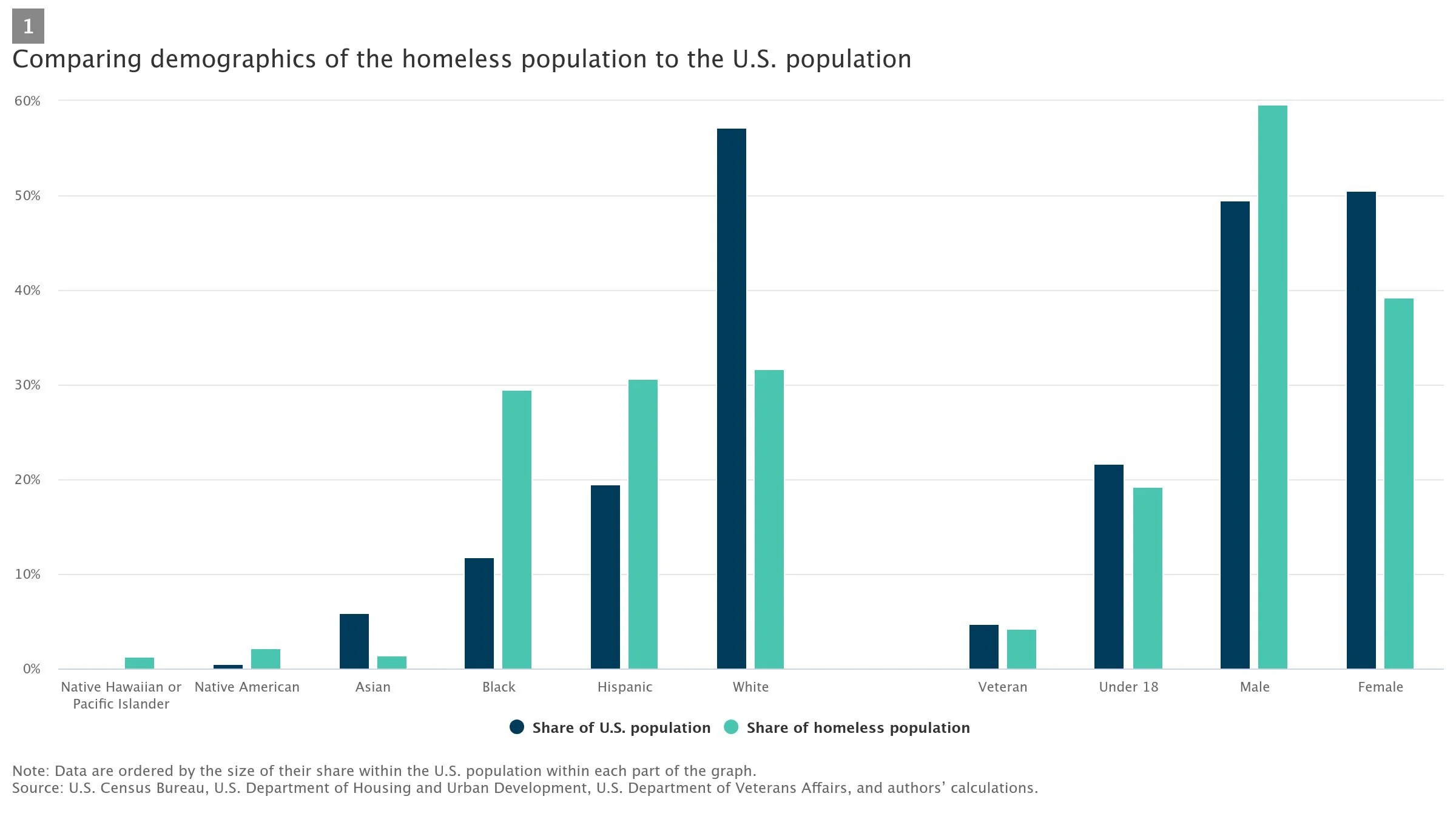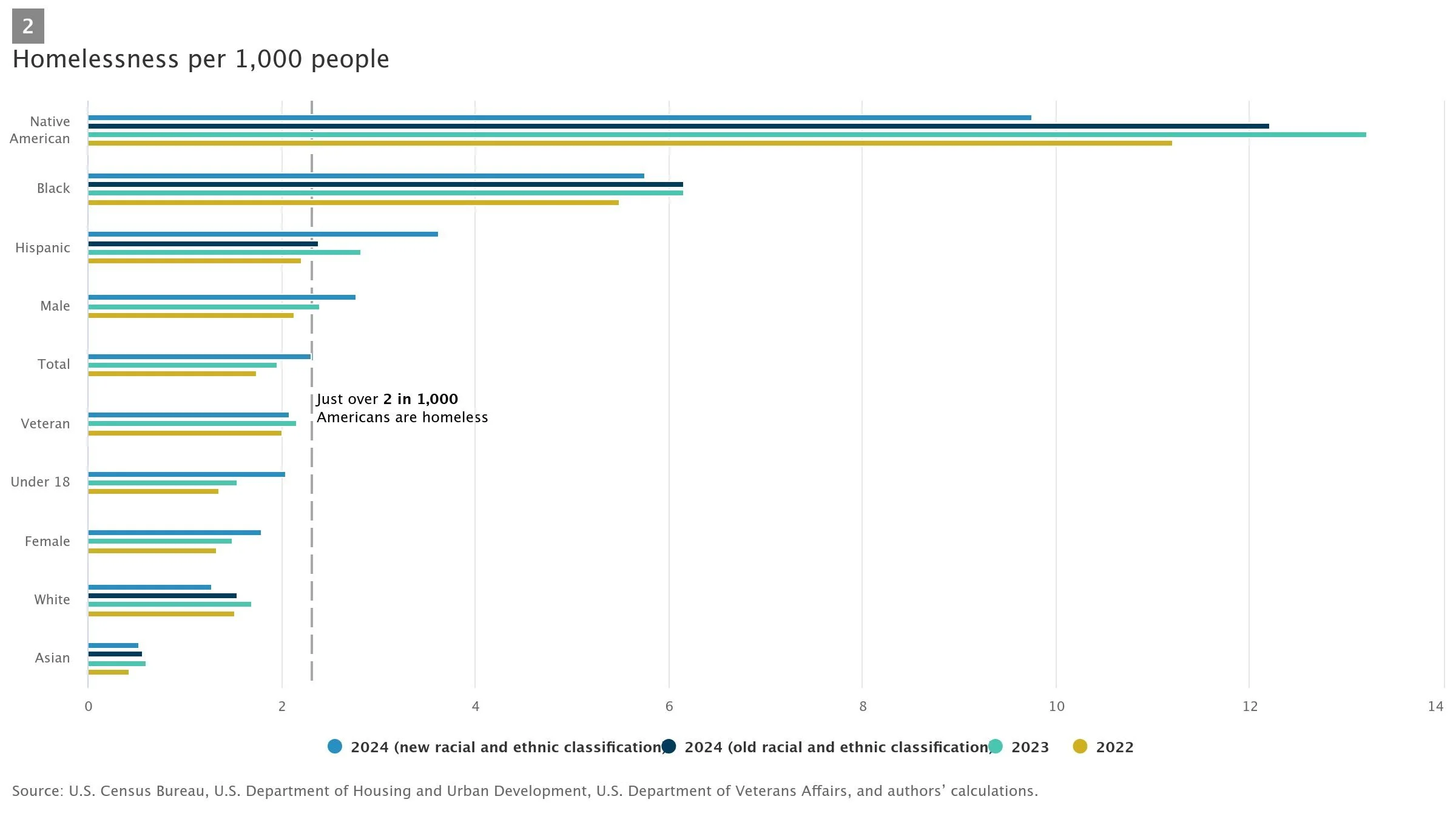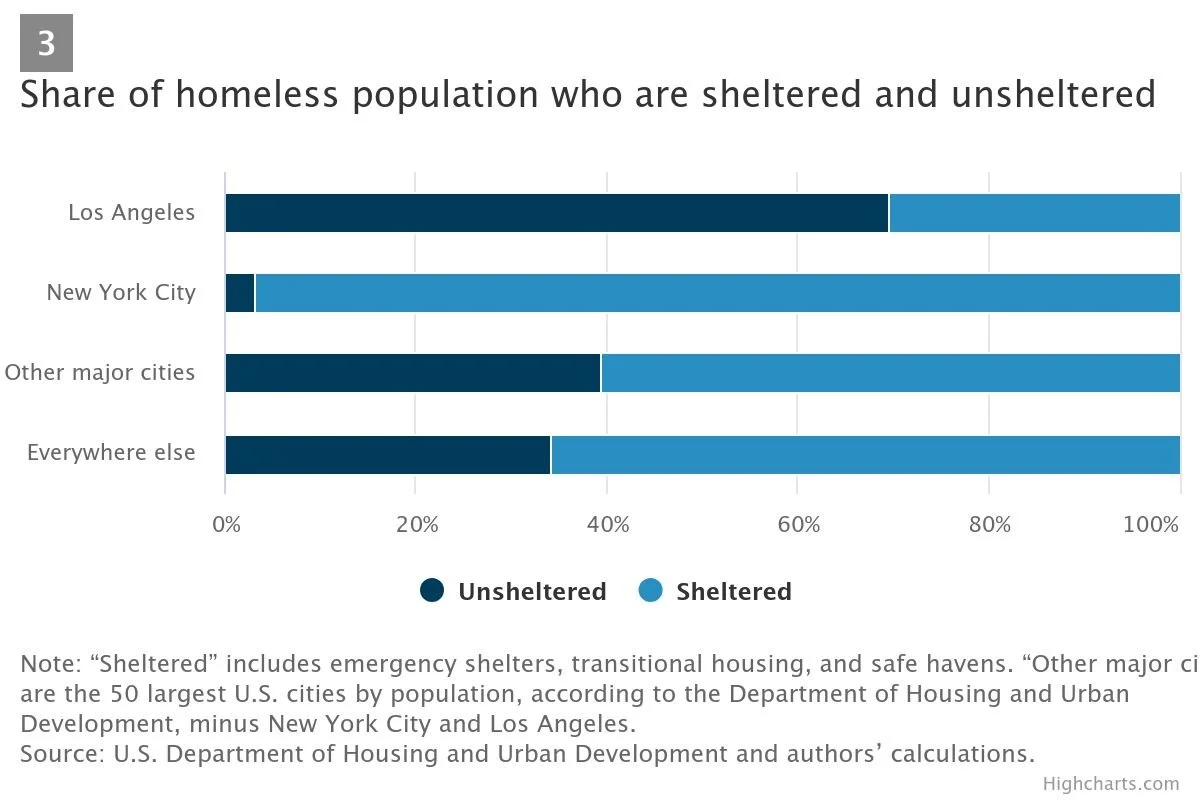The Rising Homelessness Crisis in the U.S.: A 2025 Overview
Homelessness in the United States has surged in recent years, rising from 1.75 per 1,000 people in 2022 to 2.3 per 1,000 in 2024—a 30% increase. This alarming trend underscores deep-rooted economic, social, and systemic challenges that continue to displace individuals and families. Understanding the key drivers behind this rise is essential for crafting effective solutions.
Certain demographic groups are disproportionately affected. Black and Native American individuals experience significantly higher rates of homelessness due to historical and systemic inequalities. Men are more likely to be homeless than women, and veterans continue to face elevated risks due to challenges such as PTSD, lack of support networks, and difficulties transitioning to civilian life. These disparities highlight the need for targeted interventions.
The crisis is largely driven by a lack of affordable housing, stagnant wages, and rising inflation, making it harder for middle- and lower-income households to secure stable living conditions. Additionally, systemic racism has contributed to economic disparities, further exacerbating the problem among marginalized communities. Public health crises and natural disasters have also played a role, displacing many individuals and increasing the strain on shelters and assistance programs.
Addressing homelessness requires a multi-pronged approach. Expanding affordable housing initiatives, boosting wage growth, and offering targeted financial assistance can help more people maintain stable housing. Policies aimed at reducing racial disparities and improving disaster preparedness can also prevent future displacement. By tackling these root causes, we can move toward meaningful, long-term solutions that reduce homelessness and support those most affected.
Read the entire article at minneapolisfed.org



